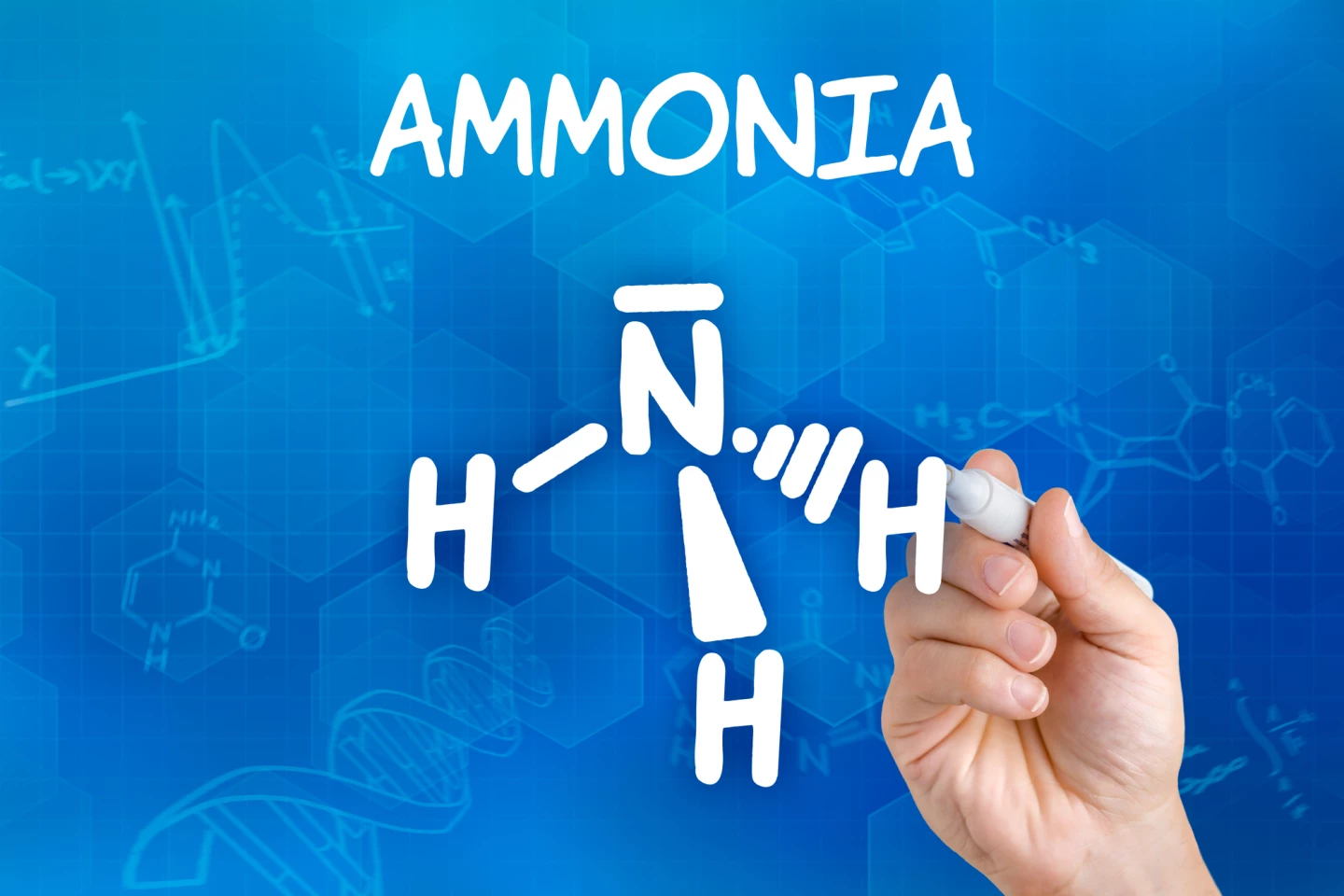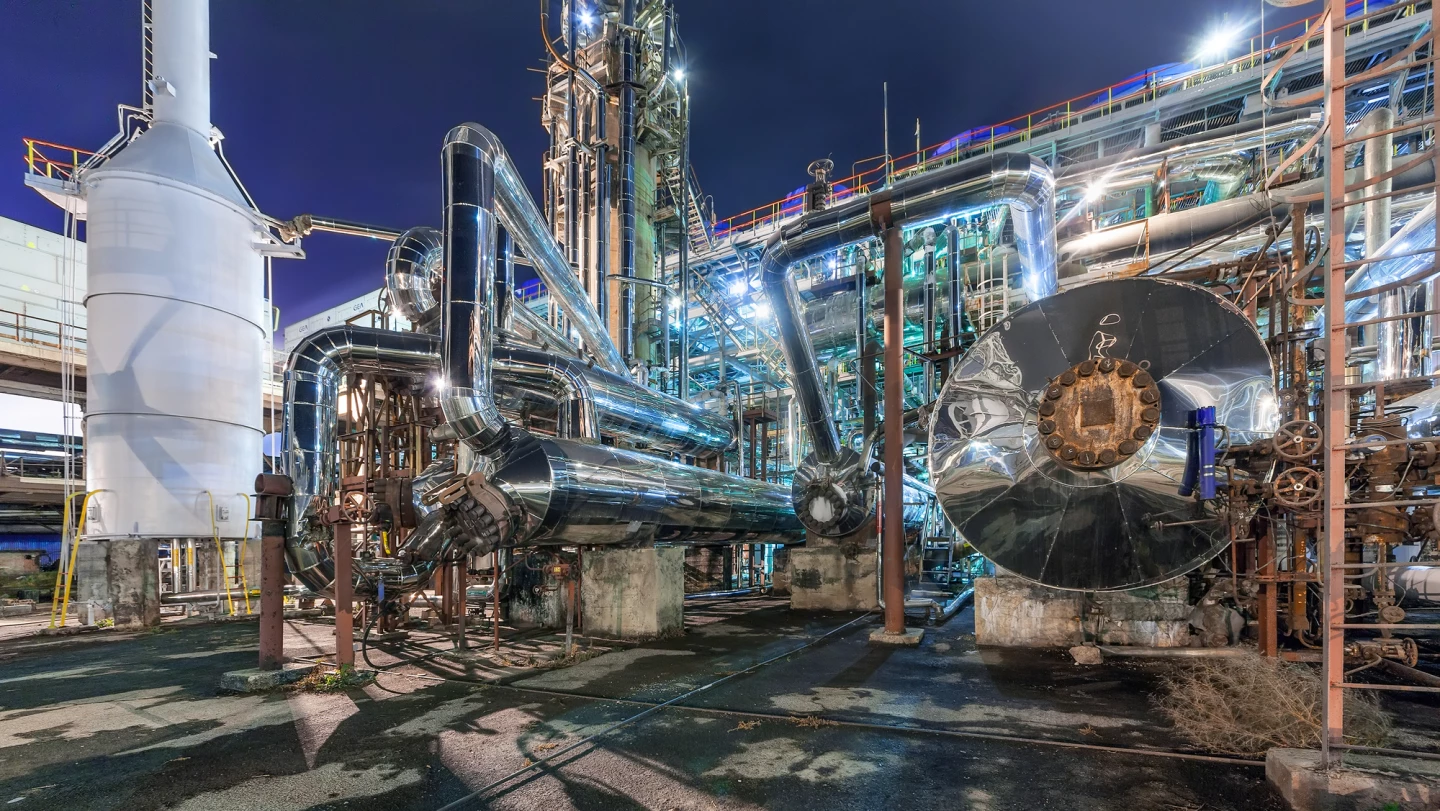You'll be hearing a lot more about ammonia as a clean fuel option as the race to zero carbon by 2050 progresses. In particular, it looks like a strong option for long-haul shipping and trucking. So what is it, how is it made, and how does it shape up as a green fuel?
Chemically, ammonia is a molecule comprising three hydrogen atoms, all linked to one central nitrogen atom. Both very common elements; the Earth's atmosphere is mostly nitrogen, and hydrogen is of course the most abundant element in the universe. That doesn't mean it's simple to produce, but we'll get to that.
At atmospheric pressure, ammonia is a very stinky gas with a boiling point of −33.3 °C (−28.0 °F). Kept cold or under a modest amount of pressure, it's relatively easy to liquefy, making it a much easier green fuel to transport and store than hydrogen. You can truck it about or keep it in tanks, cheap as chips. Hydrogen is nearly 30 times more expensive to store.
Indeed, in many ways, ammonia does a better job of storing hydrogen than hydrogen gas itself; H2 is notorious for leaking away through the metal walls of containers, for embrittling steel it comes into contact with, and for taking a lot of energy to liquefy at cryogenic temperatures. And then there's density: it may sound weird, but there's one and a half times more hydrogen in a gallon of ammonia than there is in a gallon of hydrogen, all else being equal.
Ammonia is dangerous to humans. It's caustic in high concentrations, and classified as an "extremely hazardous substance" in the United States, with strict reporting requirements for any facility that uses a significant quantity.
Today, it's most frequently used in agriculture, where as a salt or in solution it's a powerful fertilizer leading to improved yields of some cereal crops. This accounts for nearly 90 percent of commercial ammonia use in the United States. The rest includes industrial use as a precursor to virtually all synthetic nitrogen compounds, use as a general purpose household cleaning agent, use as a nitrogen source in the fermentation process, use as an antimicrobial agent, notably to kill E. coli bacteria in super-fine beef mince, and other uses.

Ammonia as a fuel
By volume, ammonia (15.6 MJ/l) carries 70 percent more energy than liquid hydrogen (9.1 MJ/l at cryogenic temperatures) and nearly three times as much energy as compressed hydrogen gas (5.6 MJ/l at a pressure of 700 bar). By weight, ammonia carries 6,250 Wh/kg – unsurprisingly far less than hydrogen's 33,300-odd Wh/kg. But it's more than 20 times the specific energy of today's lithium batteries, and more than enough to account for the inefficiencies introduced when you extract the energy.
Diesel, as the dominant fossil fuel for long haul shipping, is of course considerably better, giving you 38.6 MJ/l and 12,667 Wh/kg in a combustion cycle. But ammonia's numbers are enough to bring it into the conversation, and diesel's days are numbered.
There are a few key ways ammonia can be used as a fuel. One is by "cracking" it back into H2 and N2 gases, and then using the hydrogen, either as a combustion fuel or to produce electricity via a fuel cell. Efficiency-wise, Australia's CSIRO calculates ammonia returns about 2,094 Wh/kg when converted to hydrogen and run through a PEM fuel cell. That's about 19 percent of the 10 MWh/ton of renewable energy it takes to create the ammonia.
Another option is to burn the ammonia directly as a combustion fuel, combining it with oxygen to release energy, with nitrogen gas and water the only exhaust products. This is not super simple – ammonia doesn't burn at lower temperatures, so typically another combustion fuel needs to be used in conjunction. Also, if the combustion process isn't well managed, it can release large amounts of nitrous oxide, a potent greenhouse gas. But when done properly, CSIRO calculates it returns 2,315 Wh/kg, or 21 percent of the energy input for ammonia synthesis.
A third is to use ammonia directly as a fuel for a high-temperature solid oxide fuel cell (SOFC), creating electricity with nitrogen and water as by-products. This is much more efficient, returning as much as 5,510 Wh/kg, or 50 percent of the energy input. A drawback here is that SOFC technology is expensive and tends to work slowly, offering poor power density – but it's possible to run a hybrid system off a single fuel tank, converting a percentage of the ammonia fuel to hydrogen when burst power is needed.

Conventional ammonia production: an emissions nightmare
Right now, ammonia production is a dirty and energy-intensive process. Most of the hydrogen produced today starts with hydrogen from steam-reformed methane gas. Extracting that natural gas from the ground always causes methane leakage into the atmosphere, where it's an incredibly potent greenhouse gas, and the steam reforming process not only uses a lot of energy, it also releases carbon dioxide as part of the reaction.
To combine these H2 molecules with N2 molecules taken out of the atmosphere, you need to break the strong bonds holding those nitrogen atoms together. This is typically done using the Haber-Bosch process, which heats a mixture of the two gases up over 400 °C (752 °F) and pressurizes them to about 250 bar in the presence of an iron catalyst to create liquid ammonia.
Needless to say, the energy cost here is huge, and most of it typically comes from fossil fuels. Since ammonia is produced in enormous quantities – it's the second-most produced chemical in the world – it's currently responsible for about 2 percent of worldwide fossil energy use and the associated emissions. Add in the chemical processing and fugitive methane emissions involved, and ammonia is the single-biggest polluter in industrial chemical production, by a country mile.
At current production levels, ammonia is responsible for about 1 percent of all anthropogenic greenhouse emissions, and production is only going upward from here.
Sustainable ammonia production
It is possible to reduce emissions from the current ammonia production process, by substituting green energy for fossil energy in the Haber-Bosch process and using carbon capture and storage to separate and sequester most of the CO2 emissions from the methane reforming process. It's not possible to prevent fugitive methane leakage though, so this "blue ammonia" still comes at an environmental cost. It's considered a transitional step.
Truly "green ammonia" can be produced by using renewable energy to create hydrogen through electrolysis, and then running it through a Haber-Bosch process powered by green energy as well. It's a relatively inefficient use of renewable energy, but it gets you a genuinely emissions-free source of ammonia. This is thought of as a medium-term solution.
There are other fully green methods under development, including "reverse fuel cell" technology that converts renewable energy, water and air into ammonia without needing a separate hydrogen electrolysis process. These are starting to look pretty efficient, but they're currently still far too slow to produce the monster volumes of ammonia needed for current agricultural uses, let alone to service an emerging green liquid fuel market.
Electrochemical solutions like this are where brains and money need to be focused; they're the most promising path to zero emissions for this colossal industrial sector, no matter what the fossil-fueled incumbents might argue.
In essence, ammonia does have the potential to be a usable clean fuel. But the pathway here is not clear. Considerable work needs to be done developing and scaling new green ammonia production methods, and at the other end, considerable work needs to be done developing efficient and powerful ways to use the energy it stores. Both sides of this equation will need to become cost-competitive as well, if cheap, filthy diesel is to be replaced.
But research is gathering steam in these areas, and ammonia will be much easier to store, transport and distribute using existing networks and technologies than hydrogen.







